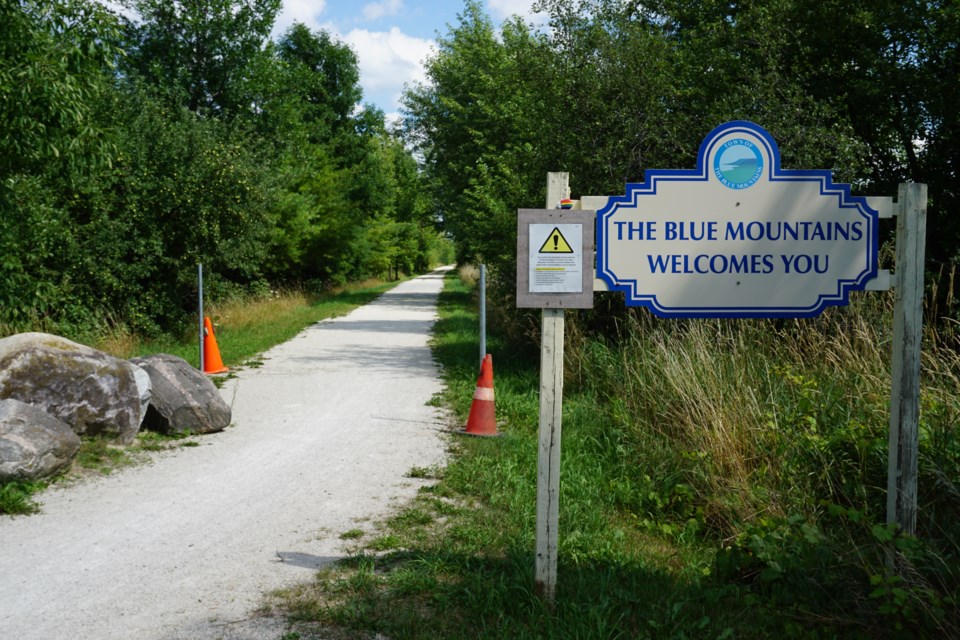The Town of The Blue Mountains has a Transportation Master Plan.
At its meeting on November 14, council formally approved and endorsed the community’s new transportation master plan, which is meant to be a guiding document for transportation priorities for many years. The town has been working on the plan for several months and the process included extensive public engagement. Full details about the plan can be found here.
Approval of the plan by council came after some last-minute changes and amendments and some procedural back and forth. Council voted 4-1 in favour of the approval of the plan, with Coun. Paula Hope opposed and Mayor Alar Soever absent.
Prior to the final approval of the plan, council had separate votes on four proposed changes/amendments to the document.
Council voted 5-0 in favour of lowering the priority of two projects in the plan. One project involved making Highway 26 in the urban area of the municipality more friendly for active transportation. The other involved making Bruce Street from Highway 26 to Marsh Street more friendly for active transportation.
Members of council felt those two projects, while admirable and desirable, weren’t the most practical and should not be high priorities.
“I can’t be convinced there is the real estate to do this,” Coun. Bill Abbotts said of the Highway 26 project. “I don’t think there’s room to put a cycling facility in there or a paved shoulder.”
Abbotts also questioned the Bruce Street project.
“Physically it’s possible. I don’t think it’s practical or politically possible to take away the parking,” he said.
During the discussion, members of staff explained the master plan is a conceptual document to guide decision-making in the future. They said concerns about specific projects would have to be addressed if/when those projects proceeded further into the process.
“This is conceptual, it’s very high-level. We recognize there are constraints, the next step if a project is a high priority, is to dig into the preliminary design to see what is possible,” said Stantec consultant Joe Olson.
Council also addressed the controversial subject of possibly paving sections of the Georgian Trail. In a 4-1 vote, council decided to reverse course and keep the paving of the Georgian Trail in the urban area of the municipality as a high priority in the master plan. At its committee of the whole meeting, council had sought to lower that project’s priority.
The trail, which runs through Meaford, The Blue Mountains and Collingwood and is owned by the three municipalities, is currently a crushed limestone surface
“Two weeks later, I’m not comfortable with the demotion of the Georgian Trail paving to low priority,” said mayor-elect and Coun. Andrea Matrosovs. “I will advocate for it to be a high priority.”
Council received a letter from the public on the trail paving issue that advised that paving the trail in town would improve accessibility.
Coun. Paula Hope voted against keeping the paving of the trail a high priority and cited concerns about safety.
“This is very complex,” said Hope, noting that vulnerable citizens use the trail as well as cyclists. “There are many uses for the trail. We do need to consider the speed cyclists will be going.”
Hope suggested a public meeting about the issue should be held before any decision to pave the trail is made.
Council also voted 3-2 against a proposal from Abbotts to make Grey Road 40 from the Georgian Trail to the 7th Line and 7th Line south to Sideroad 21 as a core active transportation route. Abbotts said the route was already being used extensively by cyclists and should be seen as a top priority. However, other members of council felt that adding a project to the list at the end was not appropriate.
“I don’t think it followed the process,” said Deputy Mayor Peter Bordignon. “To add it at this hour doesn’t sit comfortably with me.”
Only Abbotts and Coun. Rob Sampson voted in favour of the proposal.
When the final resolution to approve and endorse the plan came before council, it included the three amendments that had been approved by council in separate votes. This led to Hope voting against the resolution as she did not support making the paving of the Georgian Tail in the urban area of the community a high priority.


